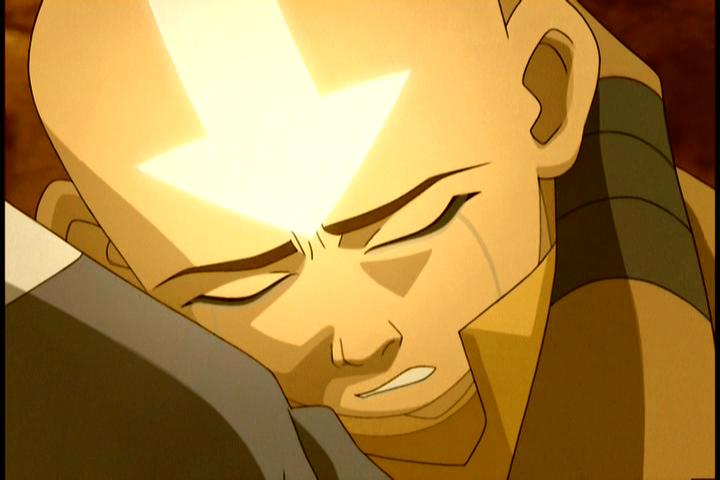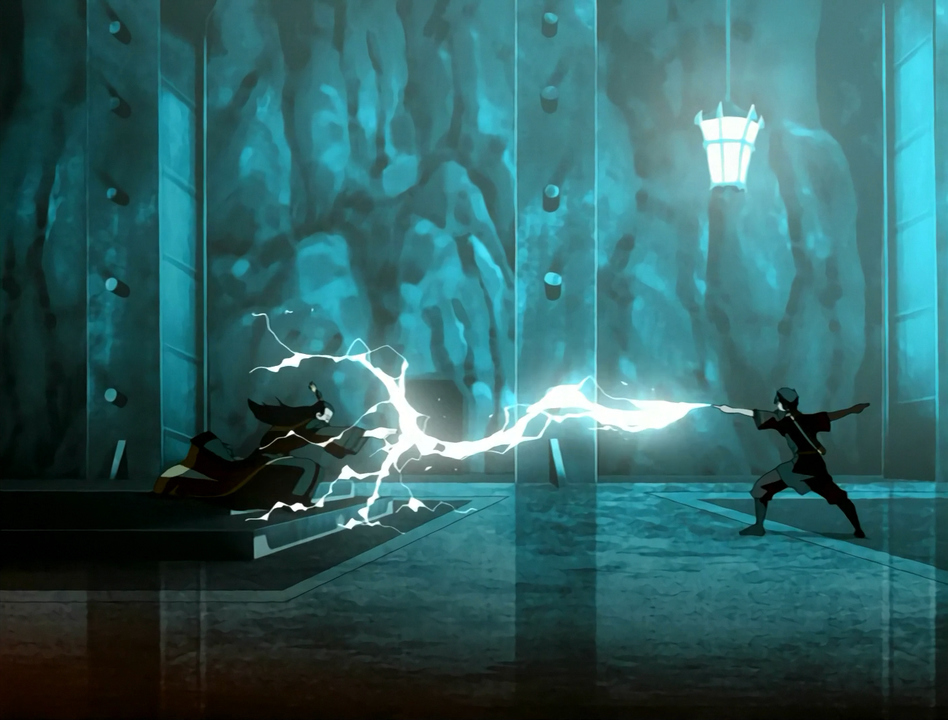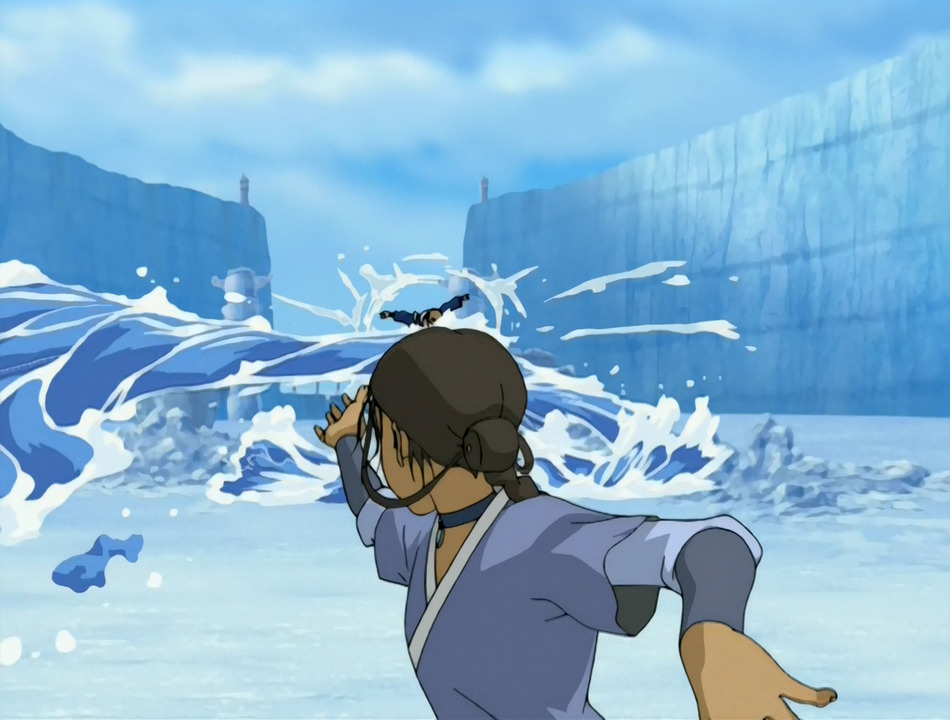‘Avatar: The Last Airbender’ Is Still One of the Greatest Shows of All Time
It has been ten years since the season finale of one of the best animated children’s television shows, Avatar: The Last Airbender. Ten years since 5.6 million people watched Aang defeat the firelord Ozai in what was one of the most-watched season finales in Nickelodeon’s history. If you haven’t seen it, you have some watching to do: It has retained all of its power, and its message matters now more than ever.
For the uninitiated, the world of The Last Airbender centers around four nations—named after fire, water, earth, and air—populated by laypeople and “benders” who can control one of these elements. The “avatar,” a 12-year-old boy named Aang, is the only one who can bend all four elements and “return balance to the world.” He has been frozen for 100 years, missing out on a century-long global war spawned by the Fire Nation’s aggressive conquests.
The show’s universe is a very carefully assembled, with a level of detail on par with the worlds of Harry Potter or Lord of the Rings. But instead of leaning on Northern European myths, The Last Airbender took its cues from a variety of Asian cultures, primarily China’s. It hired Edwin Zane, then the vice president of the group Media Action Network for Asian Americans, as a consultant to make sure everything from costuming to character drawing to art style was done in a sensitive manner. Japanese anime and manga were also a huge source of inspiration, as is obvious from the expressive facial illustration of popular Japanese shows like Astro Boy and Dragon Ball Z. There are also numerous parallels to the art style and philosophical core of the classic films of Hayao Miyazaki, like Princess Mononoke.
“Co-creators Bryan [Konietzko] and Michael [Dante DiMartino] were trying to build something that had a mythic resonance,” head writer Aaron Ehasz told me over the phone. “You want to be inspired without appropriating,” he added. “You don’t want to accidentally say something about a culture. For example, early on a lot of the designs for the Fire Nation were inspired by designs from Japan, which was a problem—you have a bad nation, and if all of their designs were Japanese, you’d project a poor message about their culture. We completely reworked the art so that it would be more broadly inspired.”
Each bending style is derived from a specific Chinese martial art, and the culture of each nation takes cues from the the physical embodiment of the element, along with inspiration from existing real-world cultures. For example, the Water Tribe is based off of Inuit and Sireniki cultures and its bending style was modeled after Tai Chi. These nuances add a layer to the fight scenes: Aang is evasive and light on foot, never attacking and always dodging; Katara keeps a pouch of water like a fanny pack, which she uses as a whip, ice daggers, or even for healing; and Zuko, especially early on, bends fire with evident rage.
The show’s greatest asset is the depth of its narrative. After the success of season one, Nickelodeon ordered exactly two more, according to a documentary about the series. This meant that the story could be tightly plotted right up until a planned ending, and the creative team knew how many episodes they had to explore their characters. “I was able—with the writers team—to give extra dimension to these characters, give reality to them, bind that reality. I got to discover who these characters were, how they’re growing, how they’re doing,” Ehasz said. “These characters end up a certain way, sometimes even independently of what you ‘want’ them to be. And you’re just looking at the characters thinking, What do they need, what would they do?”
The “emotional authenticity”—as Ehasz calls it—of the characters was how The Last Airbender was able to expose very young viewers to darker subject matter, like genocide and authoritarianism, while giving them a framework for understanding these issues. Often that was done by focusing on the emotions of the core cast as they process these events. The third episode shows Aang witnessing, firsthand, the death of his entire culture of Air Nomads at the hand of the Fire Nation. We fly to the air temple and experience Aang’s devastation at the loss of his beloved mentor, Monk Gyatso, whom Aang learns is dead by literally stumbling upon his skeleton. In flashbacks we are whisked to memories of Gyatso treating Aang like a son, and shielding him from his duty as the avatar. We learn that Aang ran away. It’s an utterly devastating sequence, whatever your age.

“If you dumb things down and oversimplify them, it might work for six- or seven-year-olds but even ten- or 11-year-olds reject things that don’t look like the world around them,” explained Ehasz. “Can you craft storytelling with incredible empathy that respects the intelligence of the audience? Through doing this, you build a story with incredible impact to a young person that also sticks with them as they grow older. Because what we wrote is still true. We didn’t turn it into a lie to make it more palatable.”
The Last Airbender is remarkable for its subtle depictions of how power corrupts and how inequality poisons everything. Fire Nation tyranny is depicted from the perspective of victims, but also from the perspective of Fire Nation children being brainwashed in school. Viewers are exposed to the inequalities within the walls of Ba Sing Se, the most powerful Earth Kingdom city, which is home to refugees and one of the last strongholds against the Fire Nation. The city is formed of ringed walls, with royalty in the middle and the poor in outer slums that the king has never visited. Peace is maintained by a secret military order called the Dai Li, who brainwash citizens and treat the king as a figurehead.
As the show goes on, it reveals itself to be a critique of imperialism as the core cast travels to town after town devastated in different ways by the Fire Nation. This includes episodes like “The Painted Lady,” where team Avatar visits a small Fire Nation lake town poisoned by the factory set up by its own nation’s elite. In “Imprisoned,” the team stays in a small Earth Kingdom town where anyone seen earthbending is arrested by Fire Nation officials. And the season one finale, Fire Nation Admiral Zhao is so zealous he even kills the moon spirit, ridding the world of the moon (the source of waterbenders’ power) in his imperialist quest to capture the Northern Water Tribe.
The show uses war to expose the impacts of intergenerational trauma and the toxicities of revenge, especially the ways that the cycle of violence hurts the innocent. A waterbending prisoner of war develops bloodbending as a way to release herself from prison—then uses it to kidnap innocent Fire Nation villagers as a form of retribution. The vigilante fighter Jet attempts to drown a whole town of innocent Fire Nation villagers to avenge the parents he lost in a Fire Nation raid. Notably, Katara declines to take down the man who killed her mother, sending a very powerful message at the end of the third season about breaking the cycle.

We see this type of trauma personified by one of the primary villains, Zuko, who spends most of season one chasing the avatar in order to “regain his honor” after being banished by his own father. Like the best villains, he’s sympathetic even while committing horrible actions—who doesn’t empathize with his need for parental approval and acceptance? He even makes the Freudian slip of calling the “firelord” the “fatherlord.” Eventually, he sides with Aang. “There’s a little Zuko in us all,” Dante Basco, the voice actor for Zuko, wrote to me. “We all hope to regain our honor in life, we’ve all been misunderstood and want to prove people wrong—especially the ones that mean the most to us.”
The Last Airbender managed to do what so few shows even today have: Assemble a cast of characters that depicts the world as it is, with a range of identities and experiences, including, for instance, Teo, a paraplegic Earth Kingdom boy. “We as a team were inspired by diverse and interesting things,” Ehasz said. “We felt, in general, that diversity was a strength, a fascinating and empowering thing. It was subtle. We wanted to see real characters who were not all cookie-cutter, characters who were different and had real vulnerability and incredible strengths, and who embraced both. It honestly wasn’t hyperconscious, it was simply a value that we shared that came out in the characters and stories we were telling.”

This is especially true of the show’s strong female characters. Princess Azula, Ty Lee, and Mai are three of the most formidable villains from the Fire Nation, the “girl gang” that infiltrates and captures Ba Sing Se. “We thought that there weren’t enough powerful awesome female characters in cartoons at that time,” Ehasz told me. The Last Airbender consistently spun compelling narratives exposing systemic sexism—like Sokka underestimating but coming to respect the all-female Kyoshi Warriors or Katara discovering that the Northern Water Tribe won’t let her learn combat skills because she’s a woman, even though she’s one of the world’s most powerful waterbenders.
And of course, there is the show’s powerhouse character Toph Bei Fong, or the “Blind Bandit,” a young blind girl in an extremely wealthy family who is the world’s greatest earthbender. Her parents shelter her to an extreme degree, doting over he while underestimating her due to her blindness, never realizing she is able to “see” by detecting vibrations through her feet.
That spirit of inclusion has helped the show stay relevant, with new fans discovering it after it had gone off the air. “It’s wild to think that this series ended ten years ago, because it seemed to actually grow after it was over,” Michaela Murphy—then known under the stage name Jessie Flower—the voice of Toph and a friend of mine since college, wrote to me. “Avatar is one of those weird blessings I didn’t recognize until way after, when fan mail started coming in, saying how Toph had helped them feel more normal in blindness. I got to work with a great group of people, and to be this rugged, fearless, brutally genuine earthbender. I’m so thankful to be part of a timeless series.”
The Last Airbender ends up being a show about human beings’ extraordinary ability to empathize with nearly anyone, given the right conditions. Almost every character is given a redemption arc, or a chance to prove their strength in times of adversity. Katara masters waterbending, Sokka masters sword fighting, and Toph invents metalbending, despite all being underestimated in various ways. When Aang fails to master the Avatar State because he goes to rescue Katara, Iroh reassures him that picking love and friendship was the right decision—that love trumps access to immense power.
Even the villains are given redemption arcs—Jet helps reunite Aang with Appa, Mai and Ty Lee eventually reject Azula. General Iroh, the show’s moral center, is teased as having a complicated past. And, of course, Zuko finds acceptance with his uncle and with Team Avatar despite his horrible past mistakes, helping to heal the history of bad will between the firelord and avatar of the previous generation.
Importantly, in each of these cases, though the marginalized are the ones fighting for their rights, actual reparations are incumbent upon the one who did wrong. It is the job of the oppressor, not the oppressed, to make amends, and the show’s only true villains are those who refuse to engage in empathy and humanity—those who are inoculated against the plights of their victims. Princess Azula is a complete and utter sociopath. And Firelord Ozai is so blinded by ego and greed that he launches a war, betrays his dear friend Avatar Roku, and gives his son a permanent scar before banishing him.
This is a great lesson to carry with us, and a lesson that is especially important to teach young people—it’s those who are complicit in injustice who must work the hardest to end it, and the oppressed must do their best not to spread their traumas onto the next generation. Those are heavy things to learn, but that type of optimism is critical now more than ever.
“If you can find that truth—that’s the timeless part,” Ehasz said. “Despite the dark topics, I hope the core message that comes out of Avatar is about love and characters who are optimistic and will fight for each other unconditionally. Those kinds of relationships matter.”
Sign up for our newsletter to get the best of VICE delivered to your inbox daily.
Follow Nicole Clark on Twitter.
This article originally appeared on VICE US.